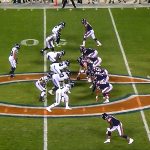If you’ve ever played golf, you’ve likely encountered the term “gimme.” A gimme refers to a putt so short that it’s deemed nearly unmissable, allowing the player to pick up the ball and count it as holed.
This simple gesture not only speeds up the game but also adds an element of sportsmanship and goodwill among players.
The concept of a gimme, derived from the phrase “give me,” typically applies to putts within 2-3 feet of the hole. While there are no official rules governing gimmes, the decision often rests with the players themselves.
Some may measure the distance meticulously, while others rely on a quick glance to decide. Regardless, the gimme remains a fascinating aspect of golf that blends efficiency with camaraderie.
What is a Gimme in Golf?
In golf, a “gimme” refers to a shot that players agree is so easy to make that the other players will concede it, allowing the player to pick up their ball and count the shot as if they had holed it.
The Origin and Definition
A gimme in golf refers to a putt considered so short it’s deemed unmissable. Instead of requiring a player to roll the ball into the hole, they can pick it up, counting it as holed.
The term “gimme” stems from the phrase “give me,” indicating the concession granted by another player. A gimme typically applies to putts within 2-3 feet of the hole.
This practice helps speed up the pace of play, especially during casual rounds. However, it’s important to note that gimmes are not allowed in official tournaments. Understanding when to concede a gimme can also reflect good sportsmanship and course etiquette.
Understanding the Rules
The rules around gimmes aren’t set in stone, as they mainly apply in casual play. In stroke play, gimmes are technically not allowed under official rules, but players often use them to speed up the game.
In match play, however, a player can formally concede a putt, hole, or match at any time, making gimmes a recognized part of the game.
The practice helps maintain the pace and enhances the spirit of camaraderie among players. Moreover, it eliminates the stress of shorter putts and promotes a more enjoyable experience on the course.
While not officially sanctioned, gimmes are widely accepted and add a layer of informal strategy to casual rounds.
When to Accept a Gimme
Accepting a gimme in golf often depends on several factors, including the context of the game, the distance from the hole, and the agreement among the players.
Here are some situations when it’s typically acceptable to concede a gimme:
Common Scenarios and Etiquette
Gimmes play an essential role in maintaining the pace and camaraderie of a golf game. A common scenario involves putts within a few inches of the hole where missing seems improbable.
In friendly, non-competitive rounds, players often agree to concede such putts to save time. However, it’s crucial to wait for an opponent’s explicit approval before picking up the ball.
Players should never assume a putt is conceded until confirmation is received. The tradition of gimmes relies on mutual respect and understanding among golfers.
Differences in Amateur and Professional Play
In amateur golf, gimmes are rampant during casual rounds. Friends often concede short putts generously to keep the game enjoyable and quick.
But the scenario changes significantly in professional play. The official rules of golf dictate that gimmes are not permitted in stroke play events.
Professional golfers must hole every putt, regardless of its length. In match play, professionals can concede putts, but the competitive nature of these events results in far fewer gimmes compared to amateur play.
The stakes and intensity of professional tournaments demand adherence to stricter rules, minimizing the occurrence of conceding putts.
Gimme vs. Conceded Putts
“Gimme” and “conceded putts” are terms often used interchangeably in golf, but they can carry slightly different connotations depending on context.
Analyzing the Differences
A gimme in golf is an informal practice where players allow each other to pick up the ball and count the stroke as holed when it’s very close to the hole.
This practice aims to speed up the game and is commonly seen in casual rounds. Gimmes usually apply to putts within 2-3 feet, though the exact distance can vary based on player agreement.
In contrast, a conceded putt is an official term, especially relevant in match play. According to golf’s rules, a player may concede their opponent’s next stroke, a hole, or even the entire match at any time.
Concessions are binding and cannot be refused or withdrawn once made. This means a player must clearly communicate the act of conceding to avoid any misunderstandings.
Strategy and Sportsmanship
Using gimmes strategically can save time and maintain the pace of the game. However, in professional settings, players must respect the rules and avoid assuming a putt is given without explicit confirmation.
An example involves Kevin Na and Dustin Johnson during the WGC Match Play in Austin. Johnson scooped his ball before Na conceded the putt, leading to an uncomfortable moment. Although Na intended to concede, the rules stipulate that a player must wait for verbal confirmation.
Conceding putts in match play embodies the spirit of sportsmanship. It balances competitive strategy with respect for one’s opponent.
Nicklaus’s legendary concession to Jacklin during the Ryder Cup exemplifies this practice. Despite the tension, Nicklaus’s gesture reflected the essence of golf as a “gentleman’s game.”
The Impact of Gimme on Game Play
Gimmes can have a significant impact on gameplay, particularly in casual rounds of golf.
Here are some ways gimmes affect the game:
Psychological Aspects
Gimmes significantly influence the psychological dynamics of golf. For instance, when players receive gimmes, they experience reduced pressure on short putts.
This boost in confidence allows players to focus on longer, more challenging shots. However, in professional settings, the lack of gimmes means players must maintain concentration throughout the game.
The tactical aspect of conceding putts in match play can also affect a player’s mindset. Knowing when to concede can display sportsmanship and psychological strength, creating a balance between competition and camaraderie.
Effects on Scoring
Gimmes directly impact scoring by eliminating the need for additional strokes on short putts. In casual rounds, this practice speeds up the game and can slightly lower scores, as players avoid potential missed putts.
However, in stroke play, where every stroke counts, gimmes are not allowed, adhering strictly to the rules. This practice ensures fairness and accurate scoring.
In match play, conceding a putt can strategically influence the flow of the game, potentially altering the outcome of holes and matches.
Thus, the use of gimmes and conceded putts directly shapes the scoring mechanics, reflecting the balance between time-saving measures and precise competition.
Conclusion
The concept of a gimme in golf plays a meaningful role in recreational settings. It enhances the pace of play by allowing players to pick up their ball on short putts deemed unmissable.
Though it speeds up casual rounds, gimmes are prohibited in official competitive formats like medal stroke play, Stableford, and any competition that affects a player’s handicap.
The tactical use of gimmes in match play showcases strategic thinking and sportsmanship. For instance, conceding a short putt can be a gesture of goodwill or a calculated move to conserve energy.
However, this practice is absent in professional formats, requiring players to demonstrate consistent precision and mental resilience.
Gimmes also impact players’ psychological outlook by reducing pressure on critical short putts. When granted a gimme, golfers might feel a sense of relief, potentially boosting their confidence.
Conversely, the absence of gimmes in competitions means players must maintain unwavering focus throughout each hole.








Colin McCarthy